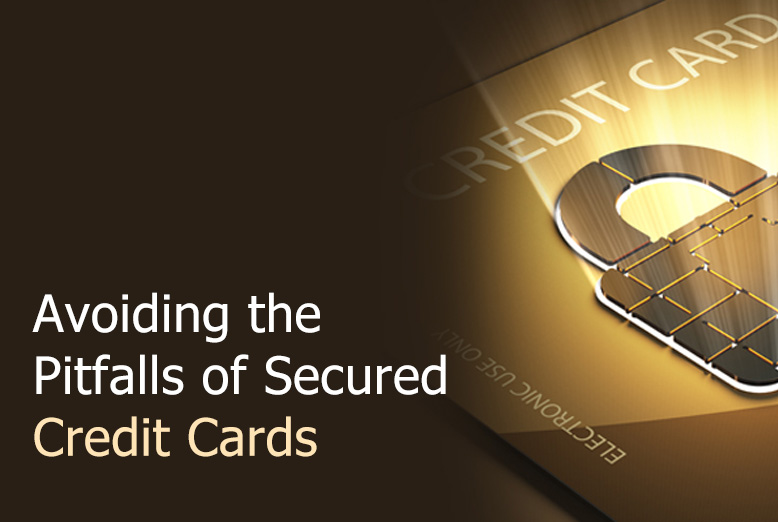They’re marketed as tools for people trying to build or rebuild credit, offering a way in when traditional cards aren’t an option. But as with most financial products, what looks simple on the surface comes with layers of detail that can make or break your experience. Choosing wisely and using the card responsibly can help you climb the credit ladder, while overlooking the fine print can trap you in unnecessary fees and stress. For some, alternatives like personal loans or even St. Louis auto title loans may seem appealing, but secured credit cards—if handled properly—can be a safer and more sustainable route.
Understanding the Real Purpose of Secured Cards
A secured credit card isn’t meant to be a long-term companion. Its real job is to train your credit profile and give you practice managing a revolving line responsibly. The deposit you put down acts as collateral, reducing risk for the lender and giving you a chance to prove reliability. If you think of it like a pair of training wheels, the card’s value is in how it helps you move forward, not in how long you keep it. Many people get tripped up by treating a secured card like a permanent credit solution rather than a temporary tool.
Why Keeping Balances Low Matters
It can feel tempting to use the entire limit on a secured card, especially if your deposit only bought you a small credit line. But your balance-to-limit ratio, also known as credit utilization, plays a huge role in your score. Running up your balance makes it look like you’re overdependent on credit, which lowers your grade in the eyes of lenders. A good target is to keep your usage under 30 percent of your limit, and if possible, under 10 percent. Not only does this strengthen your credit report, but it also shows discipline—a quality future lenders will reward.
The Importance of On-Time Payments
Payment history is the heavyweight champion of your credit score. Every missed due date can undo months of progress. With secured cards, the stakes feel even higher because lenders see them as starter products. Slip up here, and they may assume you’re not ready for bigger responsibilities. Setting reminders, enabling autopay, or syncing payment dates with payday are simple strategies to stay consistent. Remember, the goal isn’t just to pay, but to pay on time every time.
Dodging High-Fee Traps
Not all secured credit cards are created equal. Some come with annual fees, processing fees, or even application fees that eat away at your deposit before you’ve even swiped the card. Others hide high interest rates behind friendly-sounding offers. These costs add up quickly and can make your attempt at building credit more expensive than it needs to be. The smartest move is to shop around, compare options, and avoid any card that feels like it’s charging you for the privilege of proving yourself.
Reading Between the Lines
The fine print isn’t glamorous, but it’s where the truth lives. Cards that sound promising may require deposits higher than you’re comfortable with, or they might have rules that make it hard to get your money back when you close the account. Some secured cards promise upgrades to unsecured cards after a period of good behavior, but not all follow through. Taking time to read the terms carefully before signing up can save you from surprises later. If something doesn’t sit right, keep looking—there are plenty of alternatives on the market.
Building Toward the Next Step
The end goal of a secured credit card should always be graduation. After a year or two of smart usage, your improved credit score can open doors to unsecured cards, better loan terms, and greater financial flexibility. Treat the secured card as a stepping stone, not the finish line. Once you’ve proven yourself, you can move on to products that offer rewards, higher limits, and no need for deposits. Think of the secured card as a short chapter in your financial story, not the entire book.
Avoiding Emotional Spending
One often-overlooked pitfall with secured credit cards is emotional spending. People sometimes use the card as a way to comfort themselves, especially when dealing with stress or setbacks. This leads to balances growing faster than they can be paid down, which not only hurts your score but also ties up the deposit you worked hard to put down. Building awareness of your triggers and keeping spending intentional can prevent the secured card from becoming a source of anxiety instead of empowerment.
Final Thoughts: Using the Tool Wisely
Secured credit cards have real value when used with care. They offer a structured way to repair past mistakes or build a foundation from scratch. But without the right strategy, they can quickly become a drain instead of a lift. By keeping balances low, paying on time, avoiding high fees, and staying mindful of your habits, you can make the most of this opportunity. Your secured credit card should be your ticket to a stronger financial future, not a stumbling block. The key is remembering that it’s just one part of the bigger journey toward lasting stability and independence.
Also read: Kredittkort Reiseforsikring: Travel Insurance for Credit Cards







